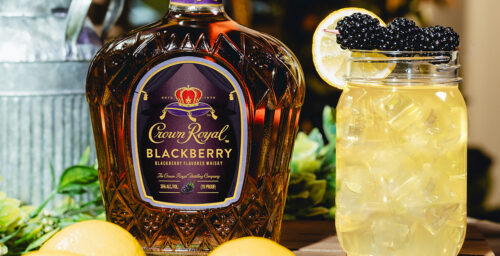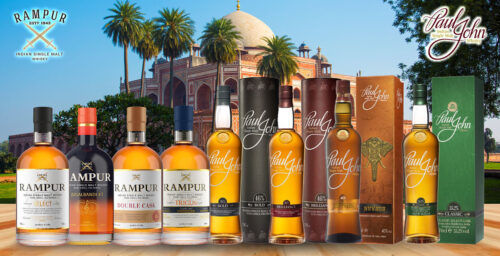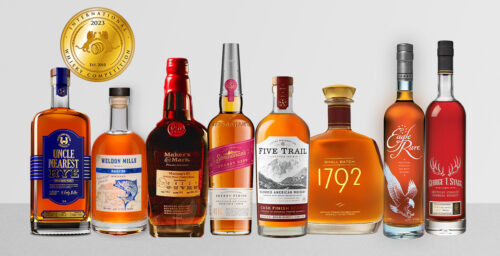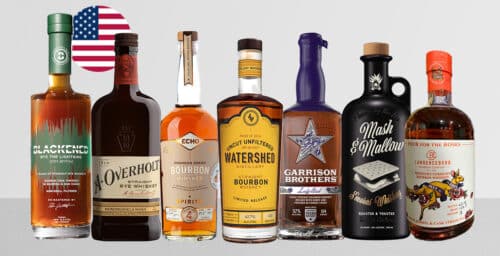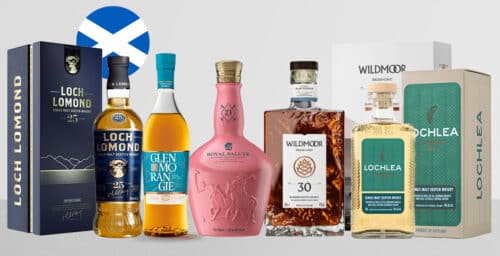Editor’s Note: This article is republished with permission from Chronogram. Author credit goes to Bryan Miller.
The total number of craft manufacturers statewide is up 282 percent since 2011, with the Hudson Valley [in New York] proving integral in this surge. An estimated 40 craft distilleries will be in operation in the region by year’s end (of the 180 in New York). Like the now-explosive beer industry, craft distilling started out tentatively, at times below the radar, but quickly found a fan base.
Valley distilling received its first kickstart in 2007 with passage of a farm-to-flask law allowing farms become full-on distilleries with tourist-friendly tasting rooms and easing fees and regulations for operations using New York grains and fruits. More recently, a group of distillers came up with a cooperative marketing initiative called “Empire Rye.” For a distillery to put an official Empire Rye sticker on its label, the whiskey must meet four criteria. At least 75 percent of its grain must be New York-grown rye. It must be distilled to no more than 160 proof; put into a barrel at no more than 115 proof (which is below the industry standard of 125 proof); and aged at least two years in new, charred oak barrels. The goal is to create a regional identity to its spirits similar to those of Tennessee whiskey and Kentucky bourbon.
“The Empire label has really galvanized the industry,” observed Jenn Smith, executive director of the New York State Distillers Guild. “We’ve more than doubled the number of distillers using it, and it’s a great value-added sales tool.”
In distilling circles around the valley you will hear terms like “heritage,” “terroir,” and “grain to glass.” If it sounds like wine speak, it is, as spirits makers approach every step of their craft in the eco-sensitive, artisanal manner associated with vineyards.
One of the first heritage-designated distilleries in the valley, Coppersea Distilling, sits on 75 lush acres on the fringe of New Paltz. Christopher Williams, the head distiller, was among the originators of the Empire Rye campaign.
“The idea really caught on and made sense for us,” he says.
Coppersea’s core spirits are “Bonticou Crag” Single Malt Rye, Excelsior Bourbon, and Big Angus Green Malt (an oak-aged single malt whisky).
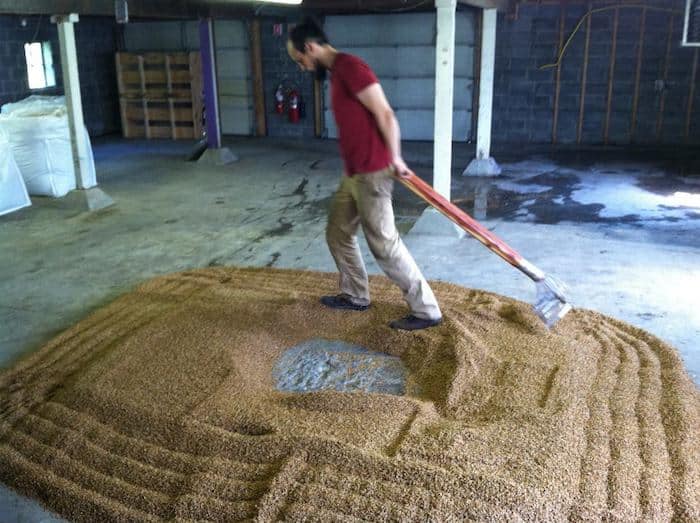
“I believe if you want to make a whiskey that really reflects the region where it is produced, the Hudson Valley is ideal,” Williams says. He cites three factors: access to abundant, high quality raw materials, like grains and fruits; proximity to an enormous market in the tristate region and beyond (Coppersea just stepped way beyond with its first shipment to Taiwan); and natural beauty that attracts visitors who are curious about food, wine, beer, and spirits.
It is said that before Prohibition more than 1,000 farm distillers used New York state grains and fruits to make alcohol. The industry collapsed with the arrival of the temperance movement and did not see a recovery in the Hudson Valley until little over a decade ago, in 2005, when Tuthilltown Spirits in Gardiner led the charge in the state legislature to unshackle the alcohol trade. The turnaround was immediate and dramatic. Today, Tuthilltown is widely recognized for its elegant and nuanced Hudson Whiskey line as well as its gin and an apple vodka made with fruit from a nearby orchard. There is also a maple cask rye, a clear corn whisky, and cassis.
In 2017, Tuthilltown Spirits was purchased by the international spirits giant William Grant & Sons, best known as the parent company of the Balvenie and Glenfiddich scotch brands.
Unlike beer making, which is relatively inexpensive pursuit (small setups can be built for $20,000), distilling costs many times that, and it is not practical to continually experiment. Consequently, distillers establish their core brands then experiment with sidelines like fruit liquors and eaus de vie.
Hillrock Estate Distillery in Ancram applies a distinctive technique to core brand whiskies, called solera, which is traditionally used in the distillation of ports, sherries, and sometimes rum. The process involves filling a series of casks at different intervals over a long period of time. As the whiskey from the oldest cast is bottled, the cask is refilled with the equivalent amount from the next oldest cask. This is repeated until the youngest cask is filled with new whiskey. This is said to assure consistency from batch to batch and add complexity to the finished product.
Steve Osborne and his wife, Kim, both biochemists, came to distilling through the back door. Fourteen years ago, they opened Stoutridge, a small winery in the town of Marlboro, with modest hopes of making a go of it selling wines at their onsite tasting room. From the outset, however, their dream was to run a distillery.
“We even left the space in the building knowing it would happen one day,” Osborne says.
That one day turned out to be two years ago. The wines had been selling briskly, and Osborne had a hunch that visitors might be open to something different. Stoutridge Winery & Distillery now produces more than two dozen vodkas, gins, assorted whiskies, and fruit liqueurs. It also carries an Empire Rye. The fruit-based products are among the most sought-after.
“It just makes so much sense when you look around the valley,” Osborne says. “We have this abundance of nature—and the people who enjoy it. It’s great.”
Total revenue for US craft distillers increased more than 70 percent between 2014 and 2016 and is projected to continue growing through 2020. With the second most distilleries of any state in the nation, New York continues to lead the way with industry-friendly legislation, distilling innovation, and successful marketing.


